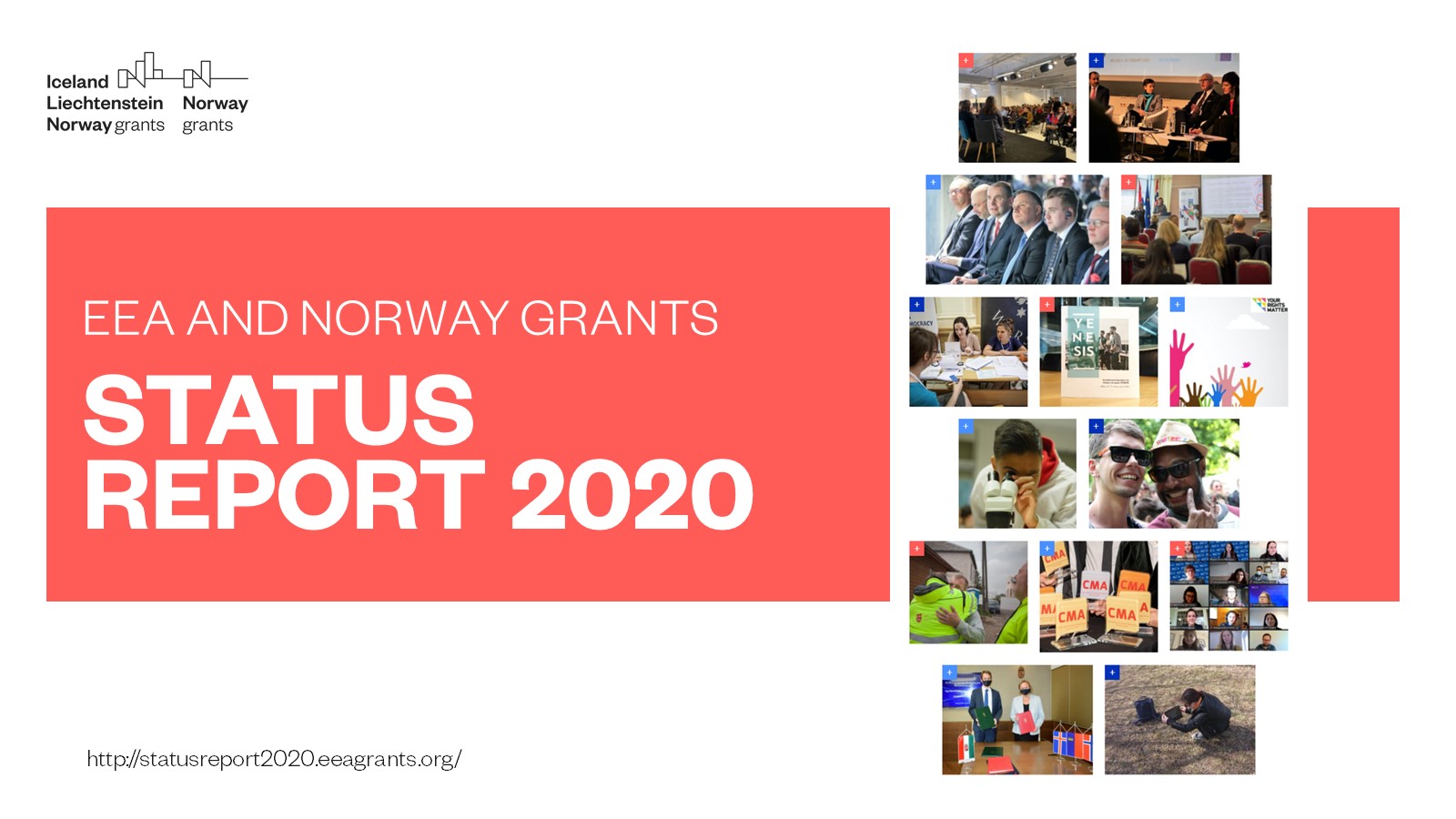
The Grants are channelled through programmes that reflect the priorities of the European Union. Each Beneficiary State has several programmes which address the most relevant issues in different areas.
The EEA and Norway Grants Status Report 2020 just came out. The report takes a look at the results and stories behind these Grants. To learn more about their activities, Panorama reached out to Árni Páll Árnason, Deputy Managing Director and Director of the Country and Bilateral Cooperation at the EEA and Norway Grants.
Briefly, can you tell us what the EEA and Norway Grants do and how they are set up?
The EEA Grants are funded jointly by three Donor States – Iceland, Liechtenstein and Norway. The Donor States contribute according to their GDP – Norway provides approximately 94.4%, Iceland 4.2% and Liechtenstein 1.3%. During the current 2014-2021 funding period, the EEA Grants amount to €1.5 billion. In addition to the EEA Grants, Norway has also set up its own funding scheme - the Norway Grants. The Norway Grants are allocated to the 13 countries which joined the EEA after 2004. This means that Greece and Portugal do not receive Norway Grants funding.
Summed up, the funding period 2014-2021 represents the most ambitious effort to date by Iceland, Liechtenstein and Norway resulting in a total budget of €2.8 billion dedicated to strengthening bilateral relations and reducing social and economic inequalities in Europe.
In the executive summary of your report, you mention that “reducing economic and social disparities” is one of your main aims. This sounds very similar to Cohesion Policy. Are there any touching points between the two?
Indeed, the EEA and Norway Grants support EU Cohesion Policy in making Europe stronger. This includes a shared goal to reduce social and economic disparities across the EEA. Like the EU Cohesion Fund, the Grants support EU Member States with a gross national income per capita below 90% of the EU average. Their priorities reflect those of the EU: a green, competitive and inclusive Europe. The Grants are directed through programmes that reflect the priorities of the European Union. The following five priority sectors have been agreed upon between the Donor States and the European Union:
In addition, the EEA and Norway Grants have set up Regional Funds to tackle Youth Unemployment and promote cross-border cooperation.
Who are the currently participating Beneficiary States and how is the relationship between the EEA and Norway Grants and them?
The EEA and Norway Grants are distributed between 15 countries. The Beneficiary States are chosen by taking into account the country’s gross national income. In the 2014-2021 funding period, the EEA Grants are split between Bulgaria, Croatia, Cyprus, Czech Republic, Estonia, Greece, Hungary, Latvia, Lithuania, Malta, Poland, Portugal, Romania, Slovakia and Slovenia. The Norway Grants are split in the same way between the 13 newest EU Member States – Bulgaria, Croatia, Cyprus, Czech Republic, Estonia, Hungary, Latvia, Lithuania, Malta, Poland, Romania, Slovakia and Slovenia.
Could you give us a few examples of projects that you would like to highlight?
By the end of 2020, we had supported 1 600 projects. Among them is the BeeConSel project. With the honeybee population in Europe in decline due to changes in their natural environment, the project is working on a tailor-made mating control system for bees based on scientifically proven tools, and knowledge and experience from Norway and Sweden. The goal is to increase the efficiency of breeding programmes in the selection of traits and ensure higher survival rates for the local honeybees. The project is funded through the Fund for Regional Cooperation and implemented by partners from Slovenia, Croatia, North Macedonia, Norway and Sweden.
Another interesting example comes from Romania. The General Inspectorate of Romanian Police plans to set up a ‘Hate crime unit’ to handle hate-related crime and investigate racially motivated attacks against Roma and other minorities. To build an effective unit, the Romanian Inspectorate and the Oslo Police District’s Hate crime unit will join forces.
The third example is a project in Lithuania, where three Fixus Mobilis ‘heritage ambulances’ are on the road to take care of historic buildings. The vans bring skilled workers all over the country to carry out urgent repairs and prevent further decay. The ‘heritage ambulances’ are the first-of-a-kind service for owners and caretakers of cultural heritage objects. The teams inspect and assess cultural heritage sites and plan necessary preventive interventions together with the site owners. They focus on small-scale projects where such measures can significantly improve the objects’ lifespan and reduce long-term renovation costs.
These are just a few examples of the 1 600 projects that have been allocated over €890 million. In total, Iceland, Liechtenstein and Norway plan to allocate €2.8 billion by 2024.
Your current 7-year funding period ends in 2021, do you have an outlook for the following period?
The projects funded in the 2014-2021 funding period will actually continue until 2024.
In the meantime, of course, we are on the precipice of the upcoming funding period. The negotiations between the Donor States and the European Union are due to begin soon. The result of these negotiations will define the way forward for the EEA and Norway Grants. For now, there are still many ideas out there that the Grants are ready to support.
Meanwhile, we invite your readers to find more exciting project stories and take a look at the results of the Grants in our new Status Report 2020.